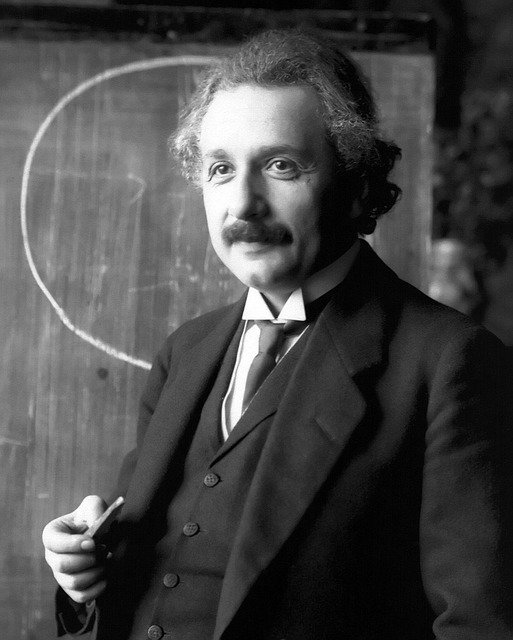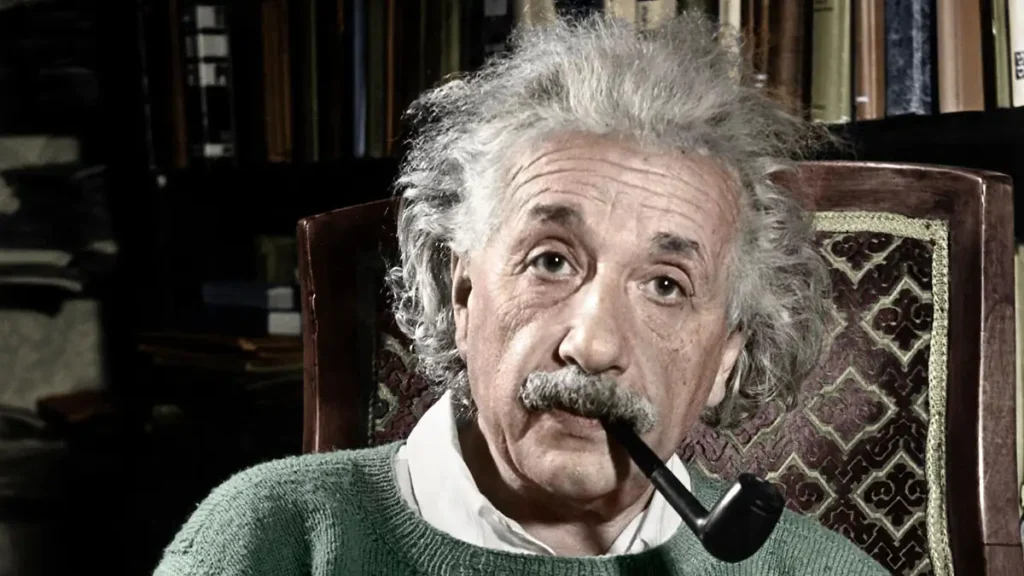The Equation That Changed Everything
E=mc² is perhaps the most famous equation in all of science, formulated by Albert Einstein in 1905. This deceptively simple equation represents a profound relationship between energy (E) and mass (m), connected by the speed of light (c) squared. It revealed that mass can be transformed into an enormous amount of energy, fundamentally altering our understanding of the universe.
This groundbreaking discovery paved the way for major advancements in modern physics, influencing fields from nuclear energy to quantum mechanics. E=mc² is not just a symbol of theoretical physics but has practical applications that shape our world today, from powering nuclear reactors to explaining the behavior of stars.
In this article, we’ll delve into the story behind E=mc², exploring Einstein’s journey, the meaning of the equation, and how it sparked a scientific revolution that continues to impact both science and technology.
Einstein’s Early Work: The Path to E=mc²
Einstein’s path to formulating E=mc² began with his work in theoretical physics, where he grappled with the nature of light and energy. In 1905, during what is known as his “miracle year,” Einstein published four groundbreaking papers, one of which introduced the theory of Special Relativity. This theory challenged the classical understanding of space and time, proposing that the speed of light remains constant, regardless of the observer’s motion.
Einstein’s curiosity about the behavior of light and energy led him to rethink the relationship between mass and energy. While traditional physics treated mass and energy as separate entities, Einstein saw a deeper connection. He proposed that mass could be viewed as a concentrated form of energy, and that this relationship was defined by the speed of light, one of the universe’s fundamental constants.
The challenge was understanding how energy could be derived from mass. Einstein’s insight revealed that even a tiny amount of mass could produce an enormous amount of energy if multiplied by the square of the speed of light (c²), a number so large that it explains the immense energy potential stored within matter. This discovery changed the course of physics and laid the foundation for nuclear energy and atomic research.
Breaking Down the Equation: What E=mc² Really Means
At its core, E=mc² is a simple equation, but its implications are vast. Let’s break down its components:
- E represents energy.
- m stands for mass, the amount of matter in an object.
- c is the speed of light in a vacuum, which is approximately 299,792,458 meters per second.
The equation states that the energy (E) of an object is equal to its mass (m) multiplied by the square of the speed of light (c²). This means that mass and energy are interchangeable—mass can be converted into energy and vice versa. The speed of light, being such a large number, means that even a small amount of mass contains an enormous amount of energy.
To put this into perspective, think of a nuclear reaction. In atomic bombs or nuclear power plants, small amounts of matter are converted into energy, which is why these reactions release such vast amounts of power. For example, when a single gram of matter is fully converted into energy, it would yield an energy output equivalent to around 21.5 kilotons of TNT, the same force as some nuclear explosions.
This equation also explains processes like the fusion of hydrogen into helium in the sun, where mass is converted into energy that powers our solar system. Einstein’s equation revealed that energy and mass are not distinct but are two sides of the same coin, profoundly transforming how we understand the universe.
The Scientific Revolution: How E=mc² Changed Physics
E=mc² revolutionized modern physics, providing the foundation for our understanding of energy and matter. Before Einstein’s discovery, scientists viewed mass and energy as separate entities governed by different rules. But with this equation, Einstein united these concepts, showing that mass could be transformed into energy, fundamentally altering the principles of physics.
One of the most significant impacts of E=mc² was in the field of nuclear physics. This equation paved the way for the development of nuclear energy by explaining how small amounts of mass could be converted into tremendous amounts of energy. This understanding led to both the creation of nuclear power plants, which generate electricity, and the development of atomic bombs, which demonstrated the destructive potential of releasing energy from mass.
In addition to its role in nuclear energy, E=mc² helped lay the groundwork for quantum mechanics, the field of physics that studies the behavior of particles at the smallest scales. It also deepened scientists’ understanding of the universe, explaining phenomena such as the immense energy produced in stars and supernovas.
Furthermore, Einstein’s equation contributed to the development of theoretical models for black holes and the expansion of the universe, offering insights into the origins and future of the cosmos. E=mc² remains at the heart of scientific research, inspiring ongoing discoveries that continue to shape modern science and technology.
The Impact on Technology: From Nuclear Energy to Space Exploration
Einstein’s E=mc² equation didn’t just change our understanding of energy—it laid the groundwork for some of the most significant technological advancements of the 20th and 21st centuries. One of the most profound impacts was in the field of nuclear energy. By explaining how mass could be converted into vast amounts of energy, E=mc² led to the development of nuclear reactors, which now generate clean electricity for millions of people around the world. Beyond power generation, the same principles are applied in medicine, particularly in radiation therapy for cancer treatment, where controlled radiation destroys harmful cells.
E=mc² has also influenced advancements in space exploration. The equation helps scientists understand the massive energy outputs of cosmic phenomena like supernovas and black holes. It also fuels the dream of harnessing cosmic energy for future space travel. With ongoing research into nuclear fusion, a process that could provide nearly limitless energy by mimicking the reactions that power the sun, E=mc² continues to guide us toward revolutionary technologies that could one day enable interstellar journeys.
However, the equation’s power also comes with ethical questions. Its application in nuclear weapons during World War II, particularly the atomic bombings of Hiroshima and Nagasaki, demonstrated both the immense potential and danger of releasing energy from mass. While E=mc² opened the door to a new era of technology and energy, it also forced humanity to grapple with the ethical responsibility of such power.
The Legacy of E=mc²: Einstein’s Lasting Influence on Science
More than a century after Einstein published his equation, E=mc² remains a cornerstone of modern physics. It continues to inspire generations of scientists and is fundamental to ongoing research in various fields, including astrophysics, energy systems, and particle physics. Whether studying the birth of stars, exploring the mysteries of dark energy, or working on cutting-edge energy technologies like nuclear fusion, scientists rely on Einstein’s equation to unlock the secrets of the universe.
Beyond its scientific applications, E=mc² symbolizes human curiosity and the desire to push the boundaries of knowledge. It’s a testament to how a single equation can reshape our understanding of the cosmos, showing that even the most complex phenomena can be described through simple but profound ideas. Einstein’s work has left an indelible mark on both science and society, with E=mc² standing as one of the most enduring legacies of his genius.
The Genius Behind the Equation
Einstein’s discovery of E=mc² transformed our understanding of energy, mass, and the universe itself. This single equation revolutionized not only the field of physics but also the technology that powers our world today, from nuclear energy to medical advances. While it brought about incredible scientific progress, it also forced humanity to confront the ethical implications of its applications.
The equation’s simplicity belies its profound impact, shaping how we perceive the universe and our place within it. Einstein’s genius lies not only in the discovery itself but in how it continues to inspire scientists, fueling advancements in technology and deepening our understanding of the cosmos. E=mc² remains a powerful symbol of human innovation, reminding us that the quest for knowledge has the potential to reshape our world.



